In an era where technology increasingly intersects with healthcare, remote patient monitoring and telehealth have emerged as critical components in redefining chronic care management and care coordination. Telehealth and healthcare case management are transforming the delivery of care, offering innovative solutions to improve patient outcomes and streamline care coordination. With advancements in technology and changes in healthcare policies, telehealth is increasingly being integrated into case management practices, providing real-time access to medical specialists, remote patient monitoring, and consultative services. These innovations offer a promising pathway to improve patient outcomes, enhance care management, and reduce hospital readmissions. Notably, the integration of telehealth and remote patient monitoring into chronic disease case management has demonstrated its potential to bridge gaps in healthcare delivery, making chronic care management more efficient and accessible. As such, the development and implementation of these technologies signify a pivotal shift in how healthcare providers, including nurse case managers, engage with and manage patients with chronic conditions.

This article delves into the practical aspects of implementing telehealth in chronic care management, beginning with preparatory steps for telehealth implementation. It will provide a step-by-step guide to setting up telehealth, discuss the integration of telehealth with existing systems, and explore the monitoring and evaluation of telehealth interventions. Additionally, the challenges of telehealth implementation will be addressed alongside best practices for telehealth, leveraging remote patient monitoring to enhance care coordination and management. Finally, it will underscore the impact of these technologies on chronic care management and patient outcomes, highlighting how telehealth and remote patient monitoring foster a chronic care management model that benefits both patients and healthcare systems.
Please also review AIHCP’s Healthcare Case Management Certification and see if it meets your academic and professional goals. The program is designed for healthcare professionals and nurses to become trained in the case management field.
Key Takeaways
- Telehealth enhances access to care, especially for patients with chronic conditions and those in remote areas.
- Technological innovations such as digital health records and remote patient monitoring are revolutionizing case management.
- There are significant challenges in implementing telehealth, including regulatory, compliance, and data privacy concerns.
- Effective remote case management requires leveraging technology, professional development, and patient engagement techniques.
- Future trends in telehealth, including artificial intelligence and wearable technology, are set to further transform healthcare case management
How to Implement Telehealth in Chronic Care Management
Implementing telehealth in chronic care management involves several critical steps, from setting clear goals to choosing the right technology. This approach not only enhances patient outcomes but also streamlines the management process for healthcare providers.
Telehealth has revolutionized the landscape of HEALTHCARE CASE MANAGEMENT by providing innovative solutions to traditional challenges. It encompasses a range of services, from virtual consultations to remote monitoring, offering unprecedented access to quality care. This transformation is particularly significant in managing chronic conditions, where continuous monitoring and timely interventions are crucial.
Setting Goals and Objectives
The first step in implementing telehealth for chronic care management is to define what you hope to achieve with the program. Goals may include scaling up an existing program or maintaining it efficiently. It is crucial to determine the specific needs that the telehealth devices must meet to serve the targeted patient population effectively. For instance, the Community Preventive Services Task Force (CPSTF) recommends telehealth interventions to manage chronic diseases by improving medication adherence and clinical outcomes like blood pressure control. Understanding these objectives helps in tailoring telehealth strategies that are effective in managing conditions such as cardiovascular disease, diabetes, and obesity.
Choosing the Right Technology
Selecting the appropriate technology is pivotal for the success of telehealth in chronic care management. The technology chosen must align with the needs of the patient population and be capable of meeting the set goals. Telehealth can be delivered in various forms:
- Live (synchronous) videoconferencing: Allows real-time communication between providers or between a provider and a patient. This method is beneficial for immediate consultations and assessments.
- Store-and-forward (asynchronous) videoconferencing: Involves the exchange of pre-recorded patient information among providers, useful for sharing results and recommendations without real-time interaction.
- Remote patient monitoring (RPM): Utilizes electronic devices to record health data that providers can later review. This is suitable for continuous monitoring of health parameters such as blood pressure or blood sugar levels.
- mHealth: Involves the use of mobile devices for health management, such as sending reminders for medication adherence or lifestyle changes.
- Audio-only consultations: Can be effective for follow-up discussions or managing patients with limited access to advanced technology.
When implementing these technologies, it is essential to consider their integration with existing systems to ensure seamless operation and data flow. Additionally, the choice of technology should be supported by robust security measures to protect patient data, adhering to standards such as HIPAA in the United States.
By focusing on these critical areas — setting clear goals and selecting the right technology — healthcare providers can effectively implement telehealth in chronic care management, thereby improving patient care and optimizing resource use.
Preparing for Telehealth Implementation
Preparing for telehealth implementation involves a comprehensive approach that encompasses training healthcare staff and educating patients to ensure the smooth delivery of services.
Training Healthcare Staff
To facilitate an effective transition to telehealth, healthcare providers must be well-versed in the various aspects of digital health delivery. Introductory training is essential for staff members with little to no experience in telehealth. These training sessions should cover the basics of telehealth technology and equipment, compliance with regulations, reimbursement processes, and establishing a telehealth workflow. Additionally, digital communication skills are crucial as they equip staff with the techniques needed to conduct virtual consultations effectively, recognizing the nuances of patient communication that differ from in-person interactions.
Healthcare providers should also be trained on the cultural aspects of care. Training in cultural humility helps staff recognize and respect the diverse backgrounds of patients, which is critical in delivering personalized care through telehealth platforms. Hands-on, in-person training sessions allow education managers to tailor the training to the specific needs of the practice, enhancing the practical skills of the healthcare team.
Ongoing education is equally important. Providers should have access to resources such as the Telehealth.HHS.gov Events section and the National Consortium of Telehealth Resource Centers, which offer up-to-date training opportunities and toolkits at no cost. This continuous learning environment helps healthcare staff stay current with telehealth technologies and practices.

Educating Patients
Educating patients about telehealth is a critical step in preparing them for remote healthcare services. Patients need clear information on what telehealth entails, its benefits, and how to access and use the services. Healthcare providers should explain the different types of telehealth services available, such as live videoconferencing, store-and-forward technology, and remote patient monitoring. This information helps patients understand the options and choose the most suitable form of care.
Patients new to telehealth may require additional support to set up and troubleshoot the technology. Providing step-by-step guides and offering real-time assistance can alleviate any technical difficulties, ensuring patients feel confident in using the services. It is also beneficial to conduct routine virtual physical exams as part of the patient’s care plan, teaching them how to prepare for and participate in these exams to maximize the benefits of telehealth.
Furthermore, informing patients about the security measures in place to protect their data and ensuring they understand their rights and responsibilities when using telehealth services are crucial for building trust and compliance.
By focusing on these preparatory measures, healthcare providers can enhance the effectiveness of telehealth implementation, leading to better patient outcomes and more efficient care delivery.
Step-by-Step Guide to Setting Up Telehealth
Technical Setup
- Identifying a Need: The initial step involves prioritizing issues identified by front-line staff that align with the organization’s strategic goals. These might include revenue loss, disruption in continuity of care, clinician shortages, or socioeconomic or geographical barriers to in-person visits. Identifying these needs helps determine which challenges can most effectively be addressed through telehealth.
- Choosing the Right Technology: Selecting appropriate technology is crucial. Options include synchronous methods like live videoconferencing for real-time communication, and asynchronous methods such as store-and-forward videoconferencing for sharing patient information at different times. Remote patient monitoring (RPM) and mobile health (mHealth) applications are also vital components, supporting continuous health monitoring and patient engagement.
- Evaluating Vendors: It is essential to evaluate vendors based on criteria that will enable the organization’s goals. Healthcare providers should engage with vendors who offer HIPAA-compliant solutions to ensure data security and privacy.
- Contracting: Establishing a solid vendor relationship is critical. The contracting process should include negotiations that are captured in documents, protecting both the healthcare organization and the vendor.
Operational Procedures
- Forming a Team: Organizing stakeholders into teams such as Core, Leadership, Advisory, and Implementation is vital. These teams will have defined criteria and responsibilities tailored to ensure the smooth deployment and operation of telehealth services.
- Defining Success: Setting clear, measurable goals with metrics that allow for tracking progress is crucial. This step guides the team and provides a benchmark for evaluating the success of the telehealth implementation.
- Making the Case: Gaining buy-in from leadership is essential for the long-term success of the telehealth program. Leadership support facilitates the allocation of necessary resources and prioritization of the implementation process.
- Operationalizing Strategy: Creating custom workflows to suit the organization’s unique needs is a critical step. These workflows should integrate seamlessly with existing clinical programs and support staff in their daily operations, ensuring compliance and effective patient care.
- Training and Onboarding: Comprehensive training for all end-users is crucial. Training should cover the use of the telehealth platform, focusing on practical aspects like making video calls, managing RPM devices, and ensuring data security. Onboarding managers should provide detailed training to equip clinicians with the necessary skills to use the telehealth system effectively.
- Preparing for ‘Go-Live’: The final step involves preparing for the official launch of the telehealth program. This includes finalizing success metrics and conducting final reviews of operational procedures to ensure all systems are functional and staff are ready to manage patient care via the new platform.
By following these steps, healthcare organizations can effectively set up a telehealth system that enhances patient care, optimizes resource use, and aligns with strategic healthcare goals.
Integrating Telehealth with Existing Systems
Integrating telehealth with existing systems is crucial for enhancing the efficiency and effectiveness of healthcare delivery. This integration involves ensuring interoperability and managing data effectively to support seamless care coordination and patient management.
Ensuring Interoperability
Interoperability is the backbone of successful telehealth integration. It ensures that various telehealth platforms and electronic health record (EHR) systems can communicate and exchange information efficiently. The presence of a structured EHR significantly strengthens the development and interoperability of telemedicine tools. For instance, the integration of telemedicine platforms with the Electronic Health Record enables the accessibility of all health data and information acquired through telemedicine tools, such as telemonitoring and televisits, at any time by both the patient and health professionals involved in the care process.
To achieve this, healthcare systems must adopt common standards and protocols. The U.S. Office of the National Coordinator for Health Information Technology (ONC) has established requirements for a secure, standards-based application programming interface (API) to support each individual patient’s access and control of their electronic health information. These standards facilitate the wide-scale adoption of data sharing, making integration more consistent and efficient, thereby providing clinically useful information and mitigating physician burnout.
Additionally, the Three-Year Plan for Information Technology in Public Administration 2020–2022 emphasizes increasingly feeding and digitizing the EHR with health documents provided by territorial health facilities. This is accomplished through updated interoperability specifications and adapting the national EHR-INI (Electronic Health Record—National Interoperability Infrastructure) platform to these new specifications.
Data Management
Effective data management is another critical aspect of integrating telehealth with existing systems. Telehealth platforms must manage security and data protection from the design phase of the application, a concept known as privacy by design. This includes clear and complete identification of the figures responsible for data processing within the structure providing the telemedicine service and a method of acquiring informed consent from the patient.
Moreover, adopting organizational and technical security measures ensures that the acquired data are processed and stored in accordance with the principles of integrity, confidentiality, availability, minimization, accuracy, updating, and limitation. This is crucial for maintaining the confidentiality of data, protecting from cyber-attacks, and ensuring business continuity and disaster recovery systems aimed at maximum data availability and uptime of the platforms.
The integration of electronic health records (EHR) and electronic medical records (EMR) into telehealth or remote patient monitoring (RPM) technologies involves the exchange of biometric data, patient demographics, and care plan information. This interoperability supports the exchange of information across platforms, promoting easy access to health information for both patients and providers, and introducing efficiencies into the care process that ultimately improve outcomes and provider workflow.
By focusing on these key areas, healthcare organizations can ensure that telehealth services are not only an adjunct to traditional care but are fully integrated into the healthcare delivery system, enhancing the quality of care and ensuring financial sustainability.
Strategies for Effective Remote Case Management
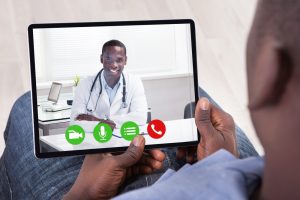
Leveraging Technology
In the realm of remote case management, leveraging technology is paramount. Advanced digital tools can streamline communication, enhance data accuracy, and facilitate real-time monitoring. Utilizing platforms that integrate electronic health records (EHRs) with telehealth services ensures a seamless flow of information, which is crucial for effective patient care.
Professional Development and Training
Continuous professional development and training are essential for case managers to stay updated with the latest telehealth technologies and best practices. This includes regular workshops, certifications, and hands-on training sessions. By fostering a culture of continuous learning, healthcare organizations can ensure that their staff is well-equipped to handle the complexities of remote case management.
Patient Engagement Techniques
Effective patient engagement techniques are vital for the success of remote case management. This involves using various communication tools to maintain regular contact with patients, providing educational resources, and encouraging active participation in their own care. Techniques such as motivational interviewing and personalized care plans can significantly improve patient satisfaction and outcomes.
In the evolving landscape of healthcare, patient satisfaction scores are a critical metric for evaluating the success of telehealth initiatives. Regular feedback and surveys can help identify areas for improvement and ensure that patient needs are being met effectively.
Monitoring and Evaluating Telehealth
Monitoring and evaluating telehealth involves a systematic approach to assess the effectiveness and efficiency of virtual care services. It is crucial for healthcare organizations to measure the impact of telehealth on organizational outcomes, patient care, and cost-effectiveness to ensure continuous improvement and high-quality service delivery.
Tracking Patient Outcomes
The process of tracking patient outcomes is integral to the evaluation of telehealth services. Healthcare providers should focus on both health and quality outcomes, which can be measured through various metrics established by federal agencies and national committees. Important health measures to track include hemoglobin A1c levels in patients with diabetes, BMI percentiles for monitoring obesity, and psychometric questionnaires to assess symptoms of anxiety disorders. These measures help in comparing the effectiveness of telehealth services to in-person visits, particularly in managing chronic conditions.
Organizations should also pay attention to the broader impacts of telehealth, such as accessibility and cost. For example, the reduction in travel time and associated costs can be significant, translating into direct savings for both providers and patients. Additionally, the effectiveness of telehealth can be assessed by the adherence to evidence-based care and the avoidance of clinical shortcuts, such as the inappropriate prescription of antibiotics.
Continuous Improvement
Continuous improvement in telehealth is achieved by regularly revisiting and revising virtual care processes. This dynamic approach ensures that telehealth services adapt to changing healthcare needs and technological advancements. Healthcare organizations should use evaluation data to inform continuous quality improvement initiatives. This might involve adjusting telehealth workflows to enhance the patient experience, reduce clinician fatigue, and address any emerging challenges.
Moreover, the integration of feedback mechanisms, such as patient and staff satisfaction surveys, into the telehealth program allows for the collection of valuable insights. These insights can guide improvements in service delivery, ensuring that telehealth meets the needs of all stakeholders, including patients, providers, and administrative staff.
By focusing on these key areas, healthcare organizations can not only monitor and evaluate their telehealth services effectively but also foster an environment of continuous improvement, ultimately leading to safer, more equitable, and higher-quality virtual care.
Enhancing Access to Care
Telehealth breaks down geographical barriers, ensuring that patients in remote or underserved areas receive the care they need. This is especially important for those with limited mobility or transportation issues. By leveraging telehealth, healthcare providers can offer real-time interactive services such as live video conferencing and asynchronous services like store-and-forward imaging.
Improving Patient Outcomes
The integration of telehealth into case management has shown to improve patient outcomes significantly. Remote patient monitoring allows for the early detection of potential health issues, enabling prompt interventions. Additionally, telehealth promotes better follow-up care and patient accountability, ensuring that patients adhere to their treatment plans.
Streamlining Care Coordination
Effective care coordination is a cornerstone of successful case management. Telehealth facilitates seamless communication between healthcare providers, patients, and caregivers. This ensures that everyone involved in a patient’s care is on the same page, reducing the risk of errors and improving overall care quality.
Telehealth is here to stay. While it was necessary during the pandemic, its benefits have secured a permanent place in modern medicine. It will continue to play a large role in medical care and affect how patients meet recovery requirements.
Addressing Challenges in Telehealth Implementation
Implementing telehealth effectively encounters several challenges ranging from technical issues to patient resistance. Addressing these challenges is crucial for the successful integration of telehealth into healthcare systems.

Troubleshooting Common Issues
Technical barriers often hinder the optimal use of telehealth. These include issues with connectivity, device compatibility, and user interface difficulties. Healthcare providers can mitigate these problems by providing clear troubleshooting guidelines and technical support. For instance, if a patient experiences internet problems during a telehealth appointment, simple steps such as restarting the device, checking for browser updates, or closing unnecessary applications can be effective. Ensuring that all telehealth equipment is up-to-date and compatible with various operating systems is crucial. Additionally, healthcare providers should have a dedicated technical support team to assist patients and staff with any technical difficulties that arise during telehealth sessions.
Moreover, healthcare providers should prepare for potential data security issues by implementing robust cybersecurity measures and educating patients on the importance of data privacy. Ensuring that telehealth platforms comply with health data regulations such as HIPAA in the United States is essential for maintaining trust and confidentiality.
Overcoming Patient Resistance
Patient resistance to telehealth can stem from discomfort with technology or a preference for in-person consultations. To address this, healthcare providers should focus on patient education and gradual introduction to telehealth services. Educating patients about the benefits and operations of telehealth, such as how it can reduce travel time and provide timely medical advice, can help in reducing resistance. Healthcare providers should explain the various aspects of telehealth during initial consultations and provide resources for patients to learn at their own pace.
It is also beneficial to maintain open lines of communication with patients to address any concerns or misconceptions about telehealth. Regular updates about new features and improvements in telehealth services can help patients feel more comfortable and involved in their healthcare process. Additionally, offering a hybrid model of care, where patients can choose between in-person and remote consultations, can help ease the transition for those hesitant about fully adopting telehealth.
By addressing these challenges through strategic troubleshooting and patient-centered approaches, healthcare providers can enhance the acceptance and effectiveness of telehealth, leading to improved patient outcomes and more efficient healthcare delivery.
Best Practices for Telehealth
Ensuring Privacy and Security
In the realm of telehealth, maintaining the privacy and security of patient information is paramount. Healthcare providers must ensure that all communications and data storage are secure to protect sensitive patient information. This involves using secure websites for information exchange, which can be identified by a lock icon in the URL bar, and ensuring that all online meetings are password-protected. Additionally, it is crucial to verify patient information in the virtual “waiting room” before proceeding with any telehealth services.
Healthcare providers should also focus on securing devices and networks by keeping antivirus software up-to-date and avoiding the use of public Wi-Fi for accessing telehealth services. For optimal security, it is recommended to use private networks and devices dedicated solely to healthcare purposes. Providers should also educate patients on the importance of privacy and guide them in setting up a secure environment for their telehealth appointments, such as finding a private location and using personal devices whenever possible.
Moreover, integrating telehealth services into existing privacy and security policies and conducting regular security risk assessments are essential steps in safeguarding patient data. Providers should be diligent in obtaining informed consent and ensuring that all telehealth activities are compliant with healthcare regulations such as HIPAA.
Promoting Patient Engagement
Patient engagement is a critical factor in the success of telehealth services. Engaging patients effectively requires building a foundation of trust and ensuring open, effective communication. Providers should encourage active participation by educating patients about their health conditions and the telehealth processes. This can be achieved through the use of educational resources such as videos, articles, and interactive tools that help patients understand their conditions and treatment options.
Telehealth platforms should be designed to facilitate easy and effective communication. Features such as real-time data sharing, personalized feedback, and the use of behavioral design principles like goal-setting and gamification can enhance patient engagement. Providers should practice active listening during telehealth sessions and allow patients’ preferences and goals to guide the conversation.
Additionally, making telehealth interactions as personal and empathetic as face-to-face consultations is vital. Providers can demonstrate empathy and support by incorporating features that address patients’ emotional well-being, such as virtual support groups and mental health resources. By fostering a supportive and engaging environment, telehealth can lead to improved health outcomes and higher patient satisfaction.
By adhering to these best practices in privacy, security, and patient engagement, healthcare providers can maximize the effectiveness of telehealth services, ensuring a secure, engaging, and patient-centered care experience.
Leveraging Remote Patient Monitoring
Remote patient monitoring (RPM) has become increasingly vital in healthcare, particularly for managing chronic diseases which significantly impact healthcare costs and patient quality of life. By using home-based or mobile monitoring devices, RPM allows for the continuous collection of patient data, which is then transmitted to healthcare providers for timely assessment and intervention.
Selecting Monitoring Tools
Choosing the right RPM tools is crucial for effective patient monitoring. Healthcare providers should consider devices that align with the specific needs of their patient population. For instance, for patients with diabetes, continuous glucose monitoring devices are essential as they provide real-time insights into blood glucose levels, helping to prevent episodes of hypo- or hyperglycemia. Similarly, patients with congestive heart failure may benefit from RPM devices that monitor weight and heart rate, as sudden weight gain can indicate worsening conditions.
When selecting RPM devices, integration with existing electronic health records (EHR) systems is a key consideration. Devices should be able to synchronize data seamlessly with EHRs to ensure that patient data is easily accessible and can be effectively utilized during clinical decision-making. This integration enables healthcare providers to have a comprehensive view of a patient’s health status, making it easier to adjust treatments as needed.
Interpreting Data
The effective interpretation of data collected through RPM is fundamental to improving patient outcomes. Healthcare providers must be adept at analyzing the data to make proactive clinical decisions. For example, a sudden change in the monitored data of a heart failure patient, such as increased weight or decreased activity levels, may necessitate immediate clinical intervention to prevent hospitalization.
Furthermore, RPM data allows providers to understand the efficacy of current treatment plans and make necessary adjustments. For instance, if a patient’s blood glucose data indicates frequent episodes of hypoglycemia, adjustments in medication dosages or diet might be required.
Moreover, RPM engages patients in their health management by providing them with access to their health data, which can motivate them to adhere more closely to prescribed treatments and lifestyle changes. Educating patients on how to interpret their own data can empower them, promote self-management, and potentially lead to better health outcomes.
In conclusion, leveraging RPM involves not only the selection of appropriate monitoring tools that integrate well with existing systems but also the effective interpretation of the data these tools provide. This approach not only enhances the management of chronic diseases but also supports the overall goal of reducing healthcare costs while improving the quality of care.
Addressing Diverse Patient Needs through Telehealth
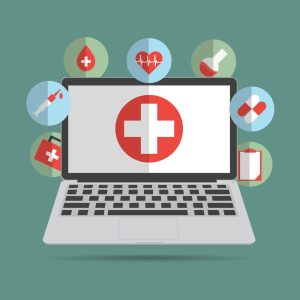
Cultural Competency
Cultural competency is essential in telehealth to ensure that healthcare services are respectful of and responsive to the cultural and linguistic needs of diverse patients. Understanding differences in how demographic groups experience telehealth may be relevant in addressing potential disparities in telehealth usage. Healthcare providers must be trained to recognize and address cultural barriers to improve patient engagement and outcomes.
Managing Chronic Conditions
Telehealth offers significant advantages in managing chronic conditions by providing continuous monitoring and timely interventions. Remote patient monitoring devices can track vital signs and symptoms, allowing healthcare providers to make informed decisions quickly. This approach not only enhances patient care but also reduces hospital readmissions and emergency room visits.
Tailored Patient Care
Telehealth enables tailored patient care by allowing healthcare providers to customize treatment plans based on individual patient needs. This personalized approach ensures that patients receive the most appropriate care, improving overall health outcomes. Telehealth platforms can facilitate regular follow-ups and adjustments to treatment plans, ensuring that care remains aligned with patients’ evolving needs.
Telehealth stands as a transformative force in healthcare, advancing the objective of equal access to top-quality care. By harnessing technology to bridge the gaps in access, telehealth empowers patients, mitigates healthcare disparities, and fosters an inclusive and patient-centric healthcare system.
Impact of Telehealth on Chronic Disease Management
Real-Time Monitoring
Telehealth enables real-time monitoring of patients with chronic diseases, allowing healthcare providers to track vital signs and symptoms continuously. This constant surveillance helps in early detection of potential health issues, thereby preventing complications. Patients living with chronic conditions often benefit from evaluations, treatment, and care from providers who specialize in that area of medicine. This approach ensures timely interventions and personalized care plans.
Preventive Care Services
Patients in the telehealth group were more likely to receive preventive care services and to have their chronic diseases managed effectively. Case managers using telehealth can provide their clients with real-time access to medical specialists for consultation, education, and treatment. This delivery model can also be used to facilitate care coordination between providers, which is essential for optimizing patient outcomes.
Patient Accountability
Telehealth champions the cause of continuity of care, particularly benefiting individuals with chronic conditions or ongoing healthcare needs. Patients can maintain regular contact with their healthcare providers, contributing to improved health outcomes and diminished healthcare disparities. By leveraging digital touchpoints, providers can increase patients’ engagement with their own self-care and remotely manage the trajectory of chronic diseases at increasingly earlier time points.
Telehealth truly helps case managers with better patient outcomes. There is a growing body of evidence that supports the use of telehealth in a variety of settings and for a variety of purposes. Studies have shown that telehealth can lead to improved patient outcomes, including increased satisfaction with care, improved compliance with treatment plans, and reduced hospital readmission.
Interdisciplinary Collaboration in Telehealth Case Management
Interdisciplinary collaboration is a cornerstone of effective telehealth case management. By integrating various healthcare professionals, telehealth platforms can ensure comprehensive and coordinated care for patients. This collaboration is particularly vital in managing chronic conditions, where multiple specialists may be involved in a patient’s care plan.
Coordinating Between Providers
Effective coordination between providers is essential for seamless telehealth case management. Telehealth platforms facilitate real-time communication and data sharing, enabling healthcare professionals to make informed decisions quickly. This is crucial for understanding case management challenges in healthcare, as it helps address issues related to cost, compliance, and care quality.
Role of Specialists
Specialists play a significant role in telehealth case management by providing expert opinions and treatment plans. Their involvement ensures that patients receive specialized care without the need for multiple in-person visits. This not only improves patient outcomes but also enhances the efficiency of the healthcare system.
Communication Tools
Communication tools are integral to the success of interdisciplinary collaboration in telehealth. These tools include secure messaging systems, video conferencing, and shared digital health records. They enable healthcare providers to collaborate effectively, ensuring that all team members are on the same page regarding a patient’s care plan.
Effective interdisciplinary collaboration in telehealth case management can significantly improve patient outcomes and streamline care coordination.
Telehealth Policies and Their Influence on Case Management
Affordable Care Act
The Affordable Care Act (ACA) has played a significant role in promoting telehealth services. By expanding Medicaid and mandating coverage for telehealth, the ACA has increased access to care for many underserved populations. This policy shift has enabled better follow-up care and patient accountability, which are crucial for effective case management.
Medicaid Waivers
Medicaid waivers have allowed states to experiment with telehealth services, tailoring them to meet the specific needs of their populations. These waivers have been instrumental in demonstrating the benefits of telehealth, such as improved patient outcomes and reduced hospital readmissions. Health care policy experts say pandemic-era rules that promoted telemedicine should be made permanent to protect gains in quality of care and greater access.
Future Policy Directions
Future policy directions are likely to focus on making temporary telehealth measures permanent. This includes addressing regulatory and compliance issues, ensuring data privacy, and improving infrastructure. Policymakers are increasingly recognizing the importance of telehealth in modern healthcare, and future policies will likely reflect this growing consensus.
Telehealth policies are evolving to meet the demands of modern healthcare, offering a promising avenue for improved case management and patient care.
Future Trends in Telehealth and Case Management
Artificial Intelligence
Artificial Intelligence (AI) is poised to revolutionize telehealth and case management. AI algorithms can analyze vast amounts of patient data to provide predictive insights, enabling proactive care. This technology can assist in identifying potential health issues before they become critical, thus enhancing patient outcomes.
Wearable Technology
Wearable technology, such as smartwatches and fitness trackers, is becoming increasingly integral to telehealth. These devices can monitor vital signs in real-time, providing healthcare providers with continuous data. This momentum is expected to continue as patients and healthcare providers recognize the convenience, accessibility, and cost-effectiveness of virtual care.
Predictive Analytics
Predictive analytics leverages historical data to forecast future health trends and patient needs. By utilizing this technology, healthcare providers can develop more effective care plans and allocate resources more efficiently. Predictive analytics is essential for managing chronic conditions and improving overall healthcare delivery.
The future of telehealth and case management is bright, with technological innovations paving the way for more efficient and effective healthcare delivery.
Evaluating the Effectiveness of Telehealth in Case Management
Outcome Measures
There is evidence that suggests that case managers using telehealth can be just as effective as traditional in-person case management, if not more so. A study published in the Journal of Case Management found that patients who received care from a case manager via telehealth had better outcomes than those who received in-person case management. Patients in the telehealth group were more likely to receive preventive care services and to have their chronic diseases managed effectively.
Patient Satisfaction
Telehealth truly helps case managers with better patient outcomes. There is a growing body of evidence that supports the use of telehealth in a variety of settings and for a variety of purposes. Studies have shown that telehealth can lead to improved patient outcomes, including increased satisfaction with care, improved compliance with treatment plans, and reduced hospital readmission.
Cost Efficiency
Telehealth is often used to support remote patient monitoring, provide consultative services, or deliver continuing medical education. This delivery model can also be used to facilitate care coordination between providers, which is essential for optimizing patient outcomes.
Case managers using telehealth can provide their clients with real-time access to medical specialists for consultation, education, and treatment.
Conclusion
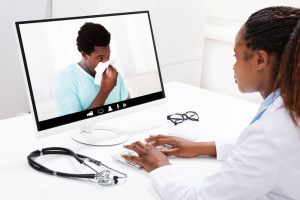
Through the comprehensive analysis presented, the significant role of telehealth and remote patient monitoring in advancing chronic care management and care coordination has been clearly established. By detailing the steps for implementing telehealth, addressing the challenges, and highlighting best practices for its successful integration, this article has provided a roadmap for healthcare providers to follow. Notably, the emphasis on patient outcomes, privacy, security, and the importance of selecting appropriate monitoring tools demonstrates the multifaceted approach required to optimize telehealth services. The discussion underscores the imperative of leveraging technology to meet the evolving needs of healthcare delivery, thereby improving accessibility, efficiency, and the overall quality of care for patients with chronic conditions.
the integration of telehealth into healthcare case management represents a significant advancement in the delivery of medical services. Telehealth not only enhances the efficiency and effectiveness of case management but also addresses the diverse needs of patient populations, particularly those with chronic conditions and complex healthcare needs. By leveraging technology, case managers can provide real-time access to medical specialists, facilitate care coordination, and ensure better follow-up care. Moreover, the evolving landscape of healthcare policies and technological innovations continues to shape the future of case management, promising improved patient outcomes and greater access to care. As these innovations become more ingrained in healthcare systems, their potential to transform the management of chronic diseases and enhance patient care is immense. Embracing these technologies while focusing on improving patient engagement, data interpretation, and the seamless integration with existing healthcare systems will be pivotal. Further research and exploration in this dynamic field will undoubtedly reveal new opportunities and challenges, propelling healthcare towards a more connected, efficient, and patient-centered future. As healthcare systems adapt to these changes, the role of telehealth in case management will undoubtedly become increasingly pivotal, underscoring its importance in modern healthcare delivery.
Please also review AIHCP’s Healthcare Case Management Program. The program is online and independent study and open to qualified professionals seeking a four year certification in Case Management.
FAQs
1. What exactly are telehealth and remote patient monitoring?
Remote patient monitoring (RPM) is a subset of telehealth that involves monitoring patients outside of conventional healthcare settings using digital devices such as weight scales, blood pressure monitors, pulse oximeters, and blood glucose meters. This allows healthcare providers to keep track of patients’ health remotely. Telehealth in healthcare case management involves the use of digital communication technologies, such as video conferencing and remote monitoring, to coordinate and manage patient care, especially for those with chronic conditions. Telehealth enhances access to care by allowing patients to receive medical consultations and follow-ups remotely, reducing the need for travel and making healthcare services more accessible to those in rural or underserved areas. Patients with chronic conditions benefit from telehealth through real-time monitoring, timely consultations with specialists, improved care coordination, and increased access to preventive care services.
2. How is remote patient monitoring expected to evolve by 2024?
By 2024, it is projected that 60.6 million patients in the U.S. will utilize RPM tools. This trend is enhancing the ability of physicians to extend their care reach, maintain continuous relationships with patients, and access a steady flow of real-time health data. Additionally, RPM devices are becoming increasingly sophisticated and more cost-effective.
3. What are the CMS guidelines for telehealth services up to the end of 2024?
According to CMS guidelines effective through December 31, 2024, patients are allowed to receive telehealth services regardless of their location. They are not required to be at a specific originating site and there are no geographic limitations. The term “distant site” refers to the location from which a physician or practitioner delivers telehealth services.
4. In what ways do telehealth and remote monitoring technologies improve patient care in nursing practice?
Telehealth and remote monitoring technologies are promising tools for enhancing patient health outcomes, reducing healthcare costs, increasing satisfaction among patients and providers, and overcoming barriers to accessing healthcare services. These technologies are becoming integral in transforming nursing practice by providing more efficient and effective care delivery. Telehealth can improve patient outcomes by providing continuous monitoring, facilitating early intervention, enhancing communication between patients and providers, and ensuring timely access to medical care.
Additional Resources
Beland, S. et, al. (2022). “Case Management and Telehealth: A Scoping Review”. Telemed J E Health . 2022 Jan;28(1):11-23. doi: 10.1089/tmj.2021.0012. National Library of Medicine. Access here
Hatef, E., et al. (2024). “Effectiveness of telehealth versus in-person care during the COVID-19 pandemic: a systematic review”. npj Digital Medicine volume 7, Article number: 157 (2024). Access here
Park, E. (2006). “Telehealth technology in case/disease management” National Library of Medicine. Access here
Liilibridge, J. (2008). “Using Telehealth to Deliver Nursing Case Management Services to HIV/AIDS Clients”. OJIN. Access here



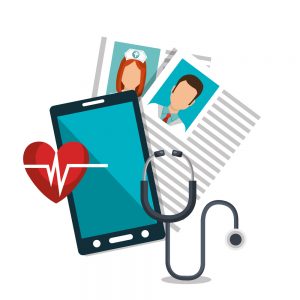


 Written By: Dominick L. Flarey, Ph.D., RN-BC, NEA-BC, FACHE
Written By: Dominick L. Flarey, Ph.D., RN-BC, NEA-BC, FACHE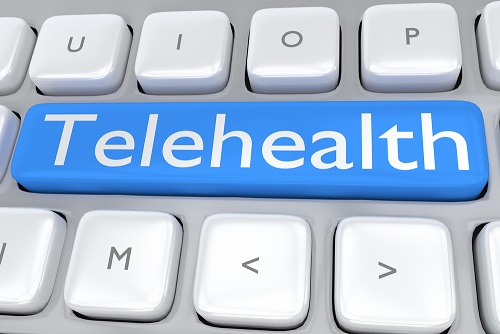 Compliance to Health Care Management
Compliance to Health Care Management
